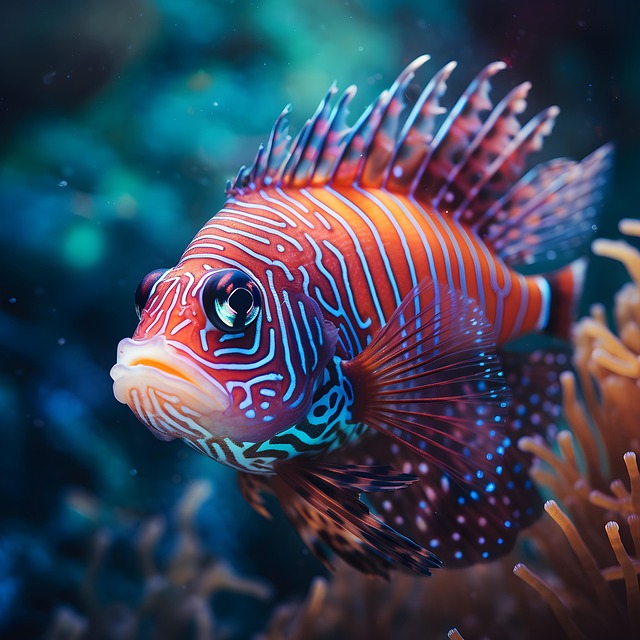Aquarium exhibits rely on complex engineering, including advanced filtration systems that mimic nature's water purification processes, to maintain healthy aquatic environments. These systems incorporate mechanical, biological, and chemical filters for impurity removal, pH balance, and temperature regulation. Strategic water circulation design, oxygenation techniques, and monitoring ensure optimal conditions for diverse marine life, showcasing their beauty responsibly in aquarium exhibits worldwide.
Discover the intricate world of behind-the-scenes engineering that brings life to stunning aquarium exhibits. From understanding complex aquarium filtration systems to mastering life support engineering, every facet contributes to maintaining vibrant, thriving aquatic ecosystems. This article explores key components, from designing efficient water circulation to vital maintenance practices, ensuring these underwater wonders remain breathtaking and healthy for all to enjoy.
Understanding Aquarium Filtration Systems
Aquarium filtration systems are intricate life support engineering marvels that play a pivotal role in maintaining aquatic habitats, especially in grand aquarium exhibits. These systems are designed to mimic natural water circulation and purification processes, ensuring the health and well-being of marine life. At their core, they typically include mechanical, biological, and chemical filters that work in harmony to remove pollutants, maintain optimal water quality, and support the complex ecosystems found in these exhibits.
Understanding how these systems function is key for aquariums to provide sustainable environments. Mechanical filtration uses equipment like pumps and strainers to physically remove debris and larger particles. Biological filtration introduces beneficial bacteria that break down organic compounds into safer byproducts, while chemical filtration further refines water quality by removing dissolved substances through various chemical reactions. This multi-layered approach ensures that aquarium exhibits can showcase diverse marine life in a manner that reflects their natural habitats, providing visitors with breathtaking underwater experiences.
Key Components of Life Support Engineering
The heart of any successful aquarium exhibit lies in meticulous life support engineering, a complex interplay of components that create and maintain a sustainable aquatic ecosystem. Key elements include sophisticated filtration systems designed to mimic natural water circulation, ensuring optimal water quality. These systems employ mechanical, biological, and chemical filters to remove impurities, regulate pH levels, and maintain stable temperature controls.
Additionally, life support engineering incorporates advanced oxygenation techniques, such as diffusers and UV sterilizers, to ensure adequate oxygen levels for aquatic life. Efficient aeration prevents hypoxia, fostering a vibrant and healthy environment. This intricate web of technology not only sustains but enhances the aquarium exhibit, providing visitors with an immersive experience that showcases the beauty and diversity of marine life.
Designing Efficient Water Circulation
Designing efficient water circulation systems is a key aspect of behind-the-scenes engineering in aquarium exhibits, ensuring optimal environmental conditions for aquatic life. These intricate designs involve careful planning and consideration to maintain the delicate balance of temperature, oxygen levels, and nutrient control within the exhibit’s ecosystem. Engineers must account for factors like tank size, species diversity, and desired aesthetic effects to create a sustainable environment.
The process involves selecting appropriate pumps and filters tailored to the specific needs of the aquarium inhabitants, while also implementing sophisticated monitoring systems. These technologies enable real-time data collection on water quality parameters, allowing for immediate adjustments to maintain water clarity, prevent pollution, and support the overall health of the aquatic ecosystem. This meticulous approach contributes to creating immersive and thriving environments in aquarium exhibits worldwide.
Maintaining Healthy Aquatic Ecosystems
Maintaining healthy aquatic ecosystems is paramount in aquarium exhibits, where delicate balances must be struck to mimic natural habitats. Behind the scenes, life support engineers play a pivotal role in ensuring the well-being of fish and other marine life. They meticulously design and implement filtration systems that replicate the natural filtration processes found in oceans and rivers, removing harmful toxins and maintaining optimal water quality.
These advanced filtration techniques include mechanical, biological, and chemical methods to address various water parameters. By carefully managing temperature, pH levels, oxygen content, and nutrient concentrations, engineers create thriving environments that support diverse aquatic communities. The goal is not just to keep the water clean but to foster vibrant, sustainable ecosystems that showcase the beauty of our oceans in a responsible and ethical manner.
Behind-the-scenes engineering in aquarium exhibits goes far beyond what visitors see. From sophisticated filtration systems and life support components to meticulously designed water circulation, each element plays a crucial role in maintaining healthy aquatic ecosystems. By understanding these key components and implementing efficient practices, aquariums can create vibrant, sustainable environments that showcase the beauty and diversity of our oceans while ensuring the well-being of marine life.
